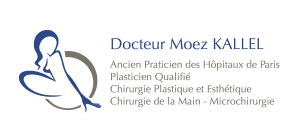What is Dupuytren’s contracture ?
Dupuytren’s disease or contracture is related to thickening of a fibrous structure under the skin of the palm of the hand and fingers
This thickening is accompanied by retraction, which limits the extension of the fingers..
Usually, the retraction of the fingers is not painful.
Very often another family member also has this disease (father, grandfather, uncle.
Alcohol and some drugs may promote development of Dupuytren’s disease.
When should you consider treatment?
Treatment should only be considered if the retraction prevents full extension of the fingers.
There is a very simple test: THE TABLE TEST
If one or more fingers cannot be extended enough to lay your hand flat on the table, the test is positive and surgical treatment is probably required.
If your test is negative, monitor the evolution.
The more the finger is retracted before the operation, the more difficult it is to restore full extension.
What are the surgical options?
Treatment involves removing the retracted tissue causing the disease. This is a delicate surgery because vessels and nerves are entangled with the Dupuytren’s bands.
In case of preoperative severe finger retraction, it is not always possible to restore full finger extension.
Sometimes because of skin defect, the palm of the hand is left open. Healing is then obtained with regular dressings for 2-3 weeks.
In almost all cases, the procedure is performed under local anaesthesia. You will leave the clinic the same day or the day after surgery. A skin graft may be used to cover skin defects or in case of recurrence.
This graft will most often be taken at the expense of the anesthetized limb (forearm or arm) leaving a filiform scar.
Nevertheless, a common behaviour is to be followed to ensure the best care from the various caregivers ( physician, nurse, physiotherapist, orthotist …).
Post-operative care : immobilization
An immobilization of the hand may be required depending on the degree of postoperative outcome and the ability to move the fingers freely to prevent recurrence of the flexion contracture.
Immobilization aims to improve healing in the most appropriate position and avoid scar bridles.
Physiotherapy :
Physiotherapy is often useful after an initial phase of immobilization to recover.
It helps for the drainage, perform an analgesic physiotherapy, provide a massage to the scars and soften them, recover passive and active mobility and if needed with the wearing of an orthesis.
Drugs :
Medical prescription will be made according to your age, your condition, your medical history, your possible allergic profile, and your ongoing treatment.
Analgesics are prescribed systematically. Postoperative antibiotics are generally not necessary.
